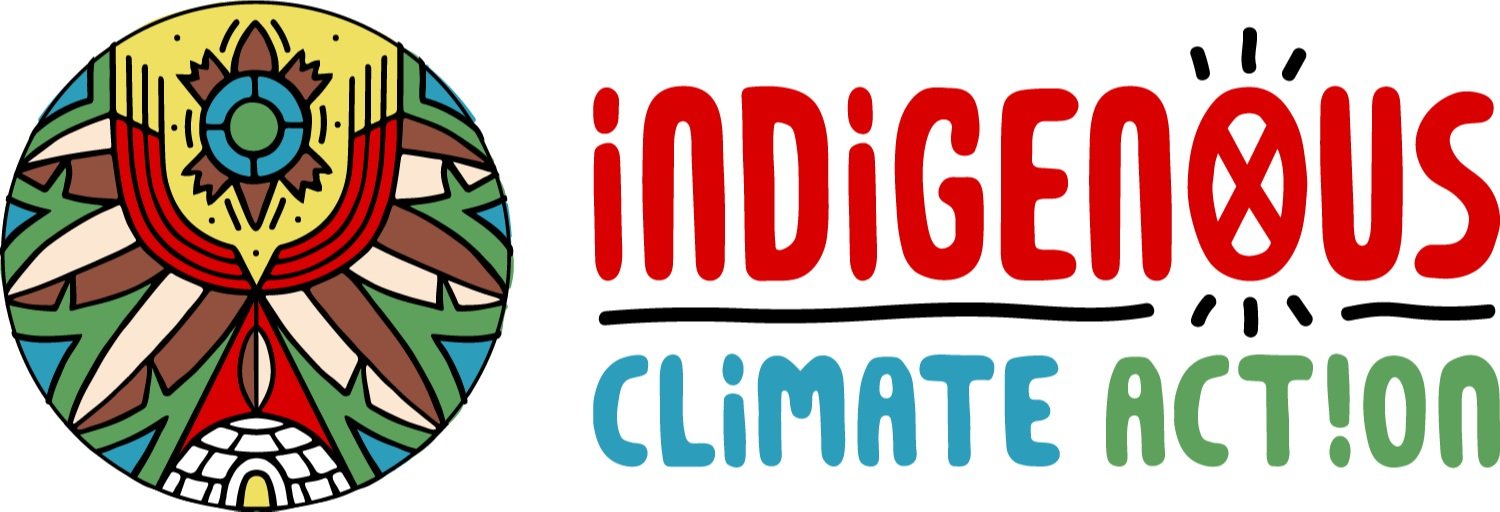#ProtectTheInlet #Stopitatthesource
On March 10th, 2018, over 6500 Indigenous and settler peoples from across Turtle Island -- including Indigenous representatives from the tar sands, Standing Rock and as far east as the Mohawk and Anishnaabe territory -- came together to stand in solidarity a the Protect the Inlet events with the Coast Salish Nations challenging the expansion of the Kinder Morgan Trans Mountain pipeline. The KM pipeline would carry crude tar sands oil from Alberta Tar Sands through interior territories of British Columbia and to the Coast terminal in Coast Salish territory. This event was organized and led by local Indigenous peoples highlighting the importance and power of Indigenous led climate justice strategies that safeguard our lands, waterways and climate for future generations -- this is Indigenous Climate Action.
Just days before the Protect the Inlet March Kinder Morgan applied for an injunction prohibiting anyone entering within 50 meters of the Kinder Morgan site. This conflicted with an area designated by the Coast Salish people as the location for the construction of a traditional Kwekwecnewtxw or Watch House. This traditional Coast Salish Watch House was raised near the pipeline route and will act as a base for resistance to the Kinder Morgan project. Watch Houses have been used since time immemorial by Coast Salish people to guard territory from danger. This watchhouse will be used as a safe space for members of the Coast Salish Nations to keep an eye on the facility and their activities just as watchouses have done for the Coast Salish people for thousands of years.
Indigenous Climate Action staff and steering committee members were a part of the march and events as both supporters of Coast Salish Nations and as witnesses to the impacts tar sands extraction in Alberta. The march began at City Central Skytrain station in Burnaby BC then moved along to the Kinder Morgan facility where the Coast Salish Nations unveiled a watch house.
ICA’s executive director Eriel Deranger spoke at the event, along with Steering Committee members Melina Laboucan-Massimo and Jesse Cardinal about how detrimental the Alberta tar sands have been to their communities located in Treaty 8 and Treaty 6 territories. The event was also MC’d by ICA’s executive steering committee member Clayton Thomas-Muller along with Rueben George of the Tsleil-Waututh Nation.
“In Alberta, we have seen tar sands ravage and rip apart the landscapes in the Treaty 8 territory for over 60 years. We have seen it contaminate our river systems, destroy our food sources and really weaken the spirit of our people. This march represents that resurgence, breathing life into the spirit of our people to know that we are not alone, that while we challenge the Kinder Morgan pipeline, we are challenging to respect and uphold the rights of indigenous peoples, that have the right to say no, that have the right to decide what happens in our backyards and in our territories. We have the right to healthy, clean, safe environments.” Eriel Deranger, Executive Director Indigenous Climate Action and member of the Athabasca Chipewyan First Nation.
While many talk of the economic gains of the oil and gas development as Indigenous peoples we are concerned about more than money, we are concerned about the well being of the land and culture. Melina Laboucan-Massimo, Lubicon Cree stated:
“Prophecy speaks of a time when blue skies will turn brown, blue water will turn black as a result of man's greed. We have two paths to choose from one that is green and just and one that is death and destruction. I know, I for one choose life! We have a reciprocal relationship to the earth, what we do to the land we do to ourselves. Where we come from the air is turning black, the children are getting sick and we can no longer drink from the waters in the streams. Our people are getting sick from the animals from the berries and from the things that have made us well in the past. And why is it okay for Canada to destroy our sacred places of prayer? Would we bulldoze their churches, would we bulldoze their graveyards? No!"
There are more opportunities in cleaning up the mess we have already made, rather than continuing the path of destruction as Jesse Cardinal, Kikino First Nation stated:
"...We have thousands of abandoned wells and thousands of pipe in the ground already in Alberta that is unused, closed off and abandoned... We have First nations and Metis wanting to work, wanting to diversify the economy, wanting to help clean up the mess. We have a province of people who wanted something different, who voted for change. When I see Alberta developing responsibly then maybe this would make sense. But looking at the mess we live in right now this makes no sense at all."
ICA representatives spoke about how although they live thousands of kilometers away from the proposed pipelines, they are connected not only in their struggle to stop the expansion of Alberta's tar sands but by their spirits as Indigenous peoples.
In front of the watch house Cedar George of the Tsleil-Waututh Nation gave one final speech to the large diverse crowd and this excerpt from his speech perfectly sums up the day:
“(You) could have been doing something else, you could have been going to the to the mall, you could have been doing your nails, you could have been going to the movies… but no, you chose to come here to stand up, to stand with each other, to lift each other up… I thank the spirits I thank the elders, I thank the ones who passed away who you brought with yourselves… I thank them, it’s not just us...the ones on the other side (are) with us. We’ll go forward with them, we will go forward with each other…. Together we will stop Kinder Morgan!"
Since the march last week Kinder Morgan has continued to challenge those at the watch house and the encampment at Burnaby Mountain with police forces. The Coast Salish people need your support to continue to hold the line to stop the construction of the Kinder Morgan pipeline.
You can join them by signing up at Protect the Inlet to take Bold Action against Kinder Morgan.
What is the Kinder Morgan Trans Mountain Pipeline?
Kinder Morgan, one of the largest energy infrastructure companies in North America, plans to expand the Trans Mountain pipeline by “twinning” the already present pipeline which was built in 1953 that extends from Amiskwaciwâskahikan (Edmonton, AB) to Coast Salish Nations territory in Burnaby, BC. The project will be carrying up to 890,000 barrels of diluted tar sands oil along the 1,150 KM stretch of pipeline each day, effectively tripling the amount of crude oil being transported across the rough, remote terrain threatening the traditional territories of numerous First Nations community along it proposed route.
This oil is currently being extracted from the Alberta tar sands, the largest industrial project on planet earth, located in the territories of the Cree, Dene and Metis peoples located in traditional Treaty No. 6 and Treaty No. 8 territories in Northern Alberta.
What are the Alberta Tar Sands?
The Alberta tar sands underlie an area of approximately 140,000 km2, representing approximately 1.8 trillion barrels of crude bitumen, of which 170 billion barrels is thought to be extractable with today’s technology. The Alberta tar sands has a long history of running roughshod over Indigenous rights and territories without adequate consultation or consent from any of the Indigenous communities along the way.
Small scale tar sands development began in 1953 before Indigenous peoples had the right to vote, leaving little room for communities to contest the projects. Large scale tar sands development began to take off in the early 1990’s when the price of oil soared. Many communities had voiced their concerns of widespread contamination and degradation to the land with little recourse since operations have begun. While the recognition of our rights has improved since operations began, these projects continue to infringe on Indigenous lands, title and rights through the contamination and degradation of the eco-systems and increased GHG emissions.
Current tar sands projects have resulted in over 775,000 hectares of land being deforested or degraded and more than 12.5 million hectares have experienced habitat disruption. Companies are currently licensed to withdraw over 590,000,000 cubic metres of water per year, which is roughly equivalent to what a city of 3 million people would require. This water is taken from the Athabasca River, impacting a critical water source for many First Nations in the region. This water cannot be returned to the river system because it becomes toxic in the extraction process and must be retained in tailings ponds, that now cover over 250 square kms, posing serious risk to the water, land, people and environment.
The Alberta government plans to allowed continued expansion of the tar sands until 2030 as laid out in the Alberta Climate Leadership Plan.
Tar Sands Expansion Continues despite Global Climate Crisis
Today there are over 309 tar sands projects in Alberta, spread across the Athabasca, Peace and Cold Lake Regions in Dene, Cree and Metis territories. These projects create over 60MT of GHG’s annually and there are another 10 major projects moving forward in 2018, including the Kinder Morgan Trans Mountain pipeline. While the world searches for solutions to address the climate crisis, Alberta and Canada alike, are continuing plans to expand the tar sands projects and infrastructure and taking us all down the wrong path.
Right now the Athabasca Chipewyan First Nation are challenging the largest ever proposed open pit mine, the Teck Frontier Mine, located 17 km from the boundary of the Poplar Point reserve - this project will create an additional 4MT if approved. If we are serious about stopping the Kinder Morgan pipeline we must also stand in solidarity with those fighting the projects at the source. Our struggles are one and the same.
What do we do?
We must all come together and stand with each other in the collective struggle to challenge business as usual in high intensity oil and gas projects like the Alberta Tar Sands. Indigenous communities are taking bold action to challenge these industries utilizing our inherent Indigenous rights by standing up to big oil and governments to safeguard and protect our ancestral homelands for future generations. Indigenous people have contributed the least to global climate change, yet we continue to be at the forefronts of the fossil fuel extraction projects and are feeling the direct and adverse impacts of both climate change and contamination of the these industries.
When we stand up for the land, water and animals, we are paving the way for a climate stable future. We need your support to ensure these projects are never built so we can ensure a safe, healthy, clean environment for future generations. #thisisindigenousclimateaction





